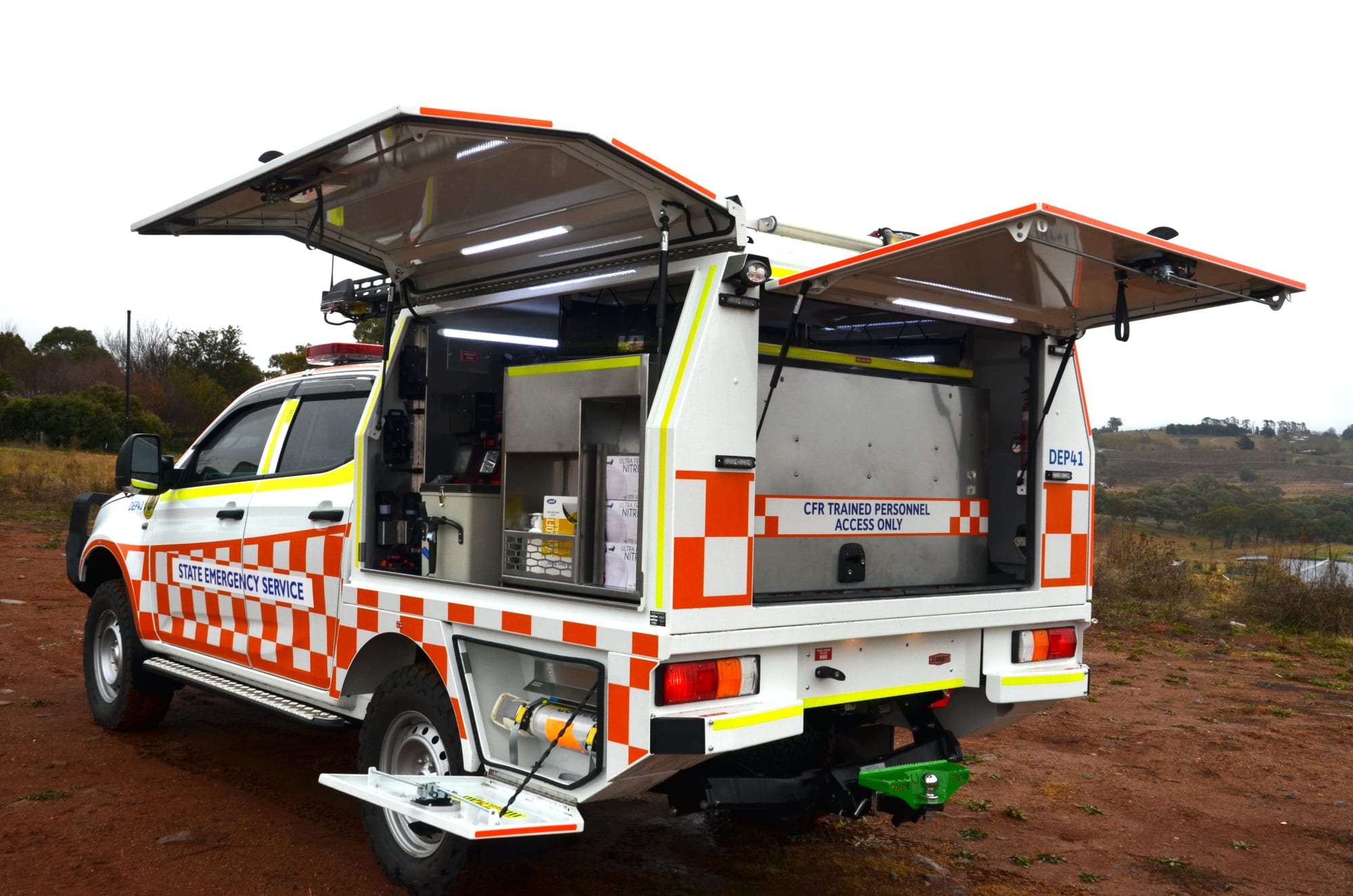Invest
Australia’s softening labour market puts another RBA cut in play — here’s what business should do now
Invest
Australia’s softening labour market puts another RBA cut in play — here’s what business should do now
A four-year high in unemployment has revived expectations the Reserve Bank could deliver another rate cut as soon as November. With quarterly GDP growth running at 0.6 per cent and annual growth at 1.8 per cent to June 2025, the data points to a cooling economy rather than a contraction. For corporate Australia, the strategic question isn’t whether a cut happens — it’s how to use a lower cost of capital to sharpen competitiveness without misreading the cycle.
Australia’s softening labour market puts another RBA cut in play — here’s what business should do now
A four-year high in unemployment has revived expectations the Reserve Bank could deliver another rate cut as soon as November. With quarterly GDP growth running at 0.6 per cent and annual growth at 1.8 per cent to June 2025, the data points to a cooling economy rather than a contraction. For corporate Australia, the strategic question isn’t whether a cut happens — it’s how to use a lower cost of capital to sharpen competitiveness without misreading the cycle.

Key implication: A modest loosening path is back on the table. The budget papers note the RBA Board reduced the cash rate in February, and the latest rise in unemployment increases the probability of a follow-up cut. That combination puts refinancing, selective growth capex and productivity investment — particularly in automation and AI — into the money for well-prepared balance sheets.
1) Policy reaction function: what the labour data is really signalling
Australia’s unemployment rate climbed to its highest since late 2021, reinforcing an outlook of gradual labour market easing rather than a sharp downturn. The Reserve Bank’s Statement on Monetary Policy (August 2024) framed this explicitly: “The labour market will continue to ease at a gradual pace but will stabilise following the pick-up in GDP growth.” The February 2025 Statement reiterated that unemployment was likely to drift a little higher before stabilising.
On growth, national accounts show GDP rose 0.6 per cent in the June quarter 2025 and 1.8 per cent annually versus June 2024, pointing to subdued but positive momentum. Combine slower hiring with positive growth and you get classic pre-cut conditions: slack building, inflation pressures easing, and policy space to support demand. Markets have been primed to read weaker labour prints as dovish — equities typically firm on such days as discount rates nudge lower.
2) P&L and cash flow: translating 25–50 bps into earnings
Rate cuts operate through three commercial channels: cost of capital, consumer demand and asset valuations.

- Cost of capital: A 25 bps cut can reduce interest expense by roughly $2.5 million annually on $1 billion of floating-rate debt. For a mid-cap with $200 million variable exposure, that’s ~$0.5 million pre-tax — often enough to tip projects over the hurdle rate.
- Demand: Lower mortgage servicing costs tend to lift discretionary spend with a lag, especially in east-coast housing-centric corridors. Even a marginal uptick in household consumption can swing inventory turns and pricing power in retail.
- Valuations: Lower discount rates lift DCF valuations; for long-duration cash flows (tech, infrastructure, healthcare), modest WACC moves can be material.
Practical lens for CFOs: recalibrate WACC and re-run project IRRs at -25 bps and -50 bps scenarios. Identify projects that shift from marginal to value-creating — and prepare procurement and delivery capacity now, not after the decision.
3) Competitive advantage: early movers bank the spread
In easing cycles, timing is a moat. Three plays tend to outperform:
- Refinance opportunistically: Lock in term debt before the cycle fully prices cuts. Treasurers should extend duration selectively, reducing 2026–27 maturity cliffs. The RBA’s forthcoming enhancements to statistical tables on open market operations improve rate transparency, aiding hedge calibration.
- Capex sequencing: Pull forward productivity-heavy investments that compound — warehouse automation, energy efficiency retrofits and logistics optimisation. With hurdle rates easing, the ROI window widens.
- Marketing and pricing agility: As demand stabilises, rapid A/B pricing and customer reactivation spend can drive share gains without heavy discounting.
A contrarian note: don’t rush to expand fixed cost bases. The labour market is easing, not re-tightening. Flex capacity and variable cost models retain option value if demand disappoints.
4) Sector lens: who wins first, who needs guardrails
Property and construction: Lower rates should ease financing costs and support presales sentiment, but labour availability is improving, not surging. Developers should emphasise staged releases and pre-commit thresholds to manage cycle risk.
Retail and consumer: Expect a gradual rebound in discretionary categories if mortgage stress relents. Merchandisers should deploy data-led assortment rationalisation and dynamic markdowns to protect margin as volumes recover.
SMEs and venture: Funding conditions have begun to thaw since the February cut noted in the 2025–26 Budget, and another reduction would further normalise deal terms. However, founders should treat any valuation uplift as runway, not a windfall.
Exporters: A dovish RBA can soften the Australian dollar at the margin, improving competitiveness. CFOs should revisit hedging ratios to balance price advantage with earnings visibility.
5) Implementation reality: a playbook for the next 90 days
- Balance sheet: Ladder maturities, diversify lenders, and stress-test covenants at +100 bps and -100 bps around base. Use swaps/caps to define an acceptable rate corridor.
- Working capital: Tighten receivables cycles now to avoid funding growth on stretched terms when demand improves.
- Capital allocation: Institute a rolling “cut-counting” investment gate — tranche approvals contingent on realised policy moves, not headlines.
- Labour strategy: Use the easing market to upgrade talent density. Replace vacancy backfills with higher-skill hires that support automation and analytics.
6) Technology investment: use a cheaper hurdle to commercialise AI
Australia’s AI ecosystem remains heavy on adoption and light on commercialisation, according to a June 2025 review of local AI growth and opportunities. Lower rates can help close that gap by improving the economics of scaling pilots into production. The Australian Taxation Office’s governance work underscores that “general purpose” systems need clear guardrails; firms should align with Australia’s AI Ethics Principles to de-risk deployments for customers and regulators.
Where to invest first:
- Revenue engines: Personalisation models for upsell/cross-sell in retail and banking; these typically show paybacks within 6–12 months at meaningful scale.
- Cost take-out: Back-office automation (AP/AR matching, claims triage), contact centre augmentation and predictive maintenance in asset-heavy sectors.
- IP defensibility: Apply for and protect proprietary models/data pipelines; recent IP Australia case studies highlight the importance of early protection when scaling internationally.
Boards should demand model risk management, audit trails and clear ROI gates. A lower policy rate is not a substitute for disciplined AI governance.
7) Outlook and scenarios: calibrating for 2025
Base case: One additional 25 bps cut by year-end remains plausible given the rising unemployment and modest growth backdrop. The RBA has consistently telegraphed a gradual easing and stabilisation in the labour market rather than a bounce.
Upside case: If GDP momentum improves beyond 0.6 per cent q/q and labour demand firms, the Bank may pause to assess pass-through before resuming any further easing.
Downside case: A sharper labour market deterioration would argue for faster support, but policy will be constrained by inflation persistence and the Bank’s desire to preserve credibility.
What to watch: ABS monthly labour force data for underemployment and participation shifts; wage growth prints; retail trade and housing finance approvals as early cycle indicators; and RBA communications in speeches and minutes. Internationally, divergent global policy paths will influence the AUD and imported inflation, shaping how far and fast the RBA can move.
Bottom line for leaders: Treat a potential November cut as a catalyst, not a crutch. Use the window to refinance, fund productivity, and push high-ROI digital and AI programmes through clear governance. In a gentle easing cycle, the edge goes to operators who can monetise a slightly cheaper dollar into materially better unit economics.

Economy
Inflation concerns rise as Australia's CPI climbs to 3.8% in October
Australia's latest Consumer Price Index (CPI) figures have sent ripples through the economy, with headline inflation accelerating to 3.8% year-on-year in October, up from 3.6% in September. The data, ...Read more

Economy
October CPI results pose challenges for RBA’s monetary policy stance
In a surprising turn of events, the October Consumer Price Index (CPI) data has raised eyebrows among economists and market strategists, revealing stronger-than-expected inflationary pressures in ...Read more

Economy
Global deal activity declines by 6% amid economic uncertainty, reports GlobalData
In a year characterised by economic turbulence and evolving market conditions, global deal activity has witnessed a notable downturn during the first ten months of 2025. According to GlobalData, a ...Read more

Economy
Rising CPI reinforces RBA’s stance as rate cut expectations remain: State Street
State Street Global Advisors says the Reserve Bank of Australia (RBA) is likely to hold its current policy outlook following the release of September quarter inflation data, which showed an unexpected ...Read more

Economy
NSW SES boosts tsunami preparedness ahead of World Tsunami Awareness Day
As World Tsunami Awareness Day approaches on 5 November, the New South Wales State Emergency Service (NSW SES) is ramping up efforts to enhance tsunami preparedness along the east coastRead more

Economy
Lifesaving Regional Response Strengthened with New NSW SES Vehicles
In a significant boost to regional emergency services, the NSW State Emergency Service (SES) has unveiled 11 new Community First Response (CFR) vehicles, designed to enhance the speed and safety of ...Read more

Economy
Australia's June quarter GDP growth driven by consumer and government spending
Australia's economy has shown unexpected resilience in the June 2025 quarter, with household and government consumption driving growth despite a significant decline in public investmentRead more

Economy
Australia's GDP surprise is real but operators should heed the growth mix warning light
Australia’s June-quarter growth beat expectations on the strength of household consumption and government spending, even as public investment sagged. The upside surprise signals resilience, but the ...Read more

Economy
Inflation concerns rise as Australia's CPI climbs to 3.8% in October
Australia's latest Consumer Price Index (CPI) figures have sent ripples through the economy, with headline inflation accelerating to 3.8% year-on-year in October, up from 3.6% in September. The data, ...Read more

Economy
October CPI results pose challenges for RBA’s monetary policy stance
In a surprising turn of events, the October Consumer Price Index (CPI) data has raised eyebrows among economists and market strategists, revealing stronger-than-expected inflationary pressures in ...Read more

Economy
Global deal activity declines by 6% amid economic uncertainty, reports GlobalData
In a year characterised by economic turbulence and evolving market conditions, global deal activity has witnessed a notable downturn during the first ten months of 2025. According to GlobalData, a ...Read more

Economy
Rising CPI reinforces RBA’s stance as rate cut expectations remain: State Street
State Street Global Advisors says the Reserve Bank of Australia (RBA) is likely to hold its current policy outlook following the release of September quarter inflation data, which showed an unexpected ...Read more

Economy
NSW SES boosts tsunami preparedness ahead of World Tsunami Awareness Day
As World Tsunami Awareness Day approaches on 5 November, the New South Wales State Emergency Service (NSW SES) is ramping up efforts to enhance tsunami preparedness along the east coastRead more

Economy
Lifesaving Regional Response Strengthened with New NSW SES Vehicles
In a significant boost to regional emergency services, the NSW State Emergency Service (SES) has unveiled 11 new Community First Response (CFR) vehicles, designed to enhance the speed and safety of ...Read more

Economy
Australia's June quarter GDP growth driven by consumer and government spending
Australia's economy has shown unexpected resilience in the June 2025 quarter, with household and government consumption driving growth despite a significant decline in public investmentRead more

Economy
Australia's GDP surprise is real but operators should heed the growth mix warning light
Australia’s June-quarter growth beat expectations on the strength of household consumption and government spending, even as public investment sagged. The upside surprise signals resilience, but the ...Read more








